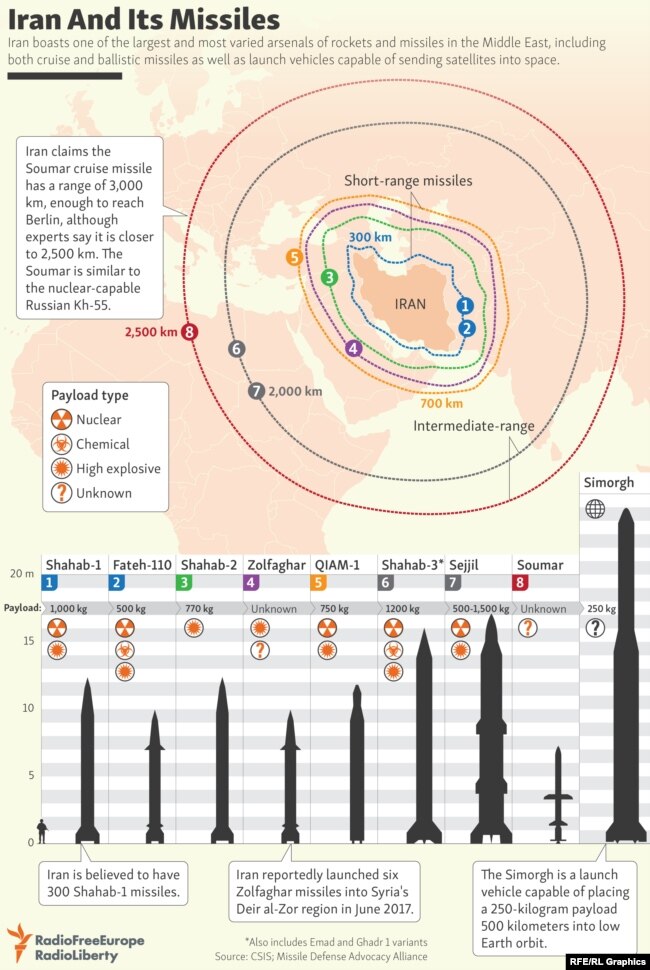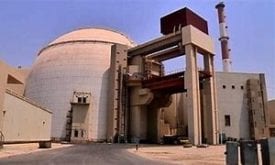Radiofarda – The Islamic Republic of Iran acknowledged its fourth failure in its space ambitions Sunday evening February 9, as the missile carrying Satellite Zafar [Victory] could not reach the required speed to put the satellite into orbit.
The latest failure was similar to two previous cases, while in another attempt a major blast on the launch pad led to a technological fiasco.
Initial stages for the launch started several weeks ago and, in the meantime, Iran’s Minister of Information Technology and Communications Mohammad Javad Jahromi pursued an energetic campaign on social media to promote the launch. He invited dozens of trusted social media activists to the launch site near Semnan in central Iran.
According to Iranian officials the satellite eventually fell in the Indian Ocean, although parts of it crashed in the Iranian Province of Sistan and Baluchistan where villagers were reportedly terrified by the explosions they saw.
As far as Jahromi was concerned, however, it was still a victory that brought Iran closer to its dreams. “The satellite was not put in orbit, but it expanded our knowledge of space. This is a success. Sometimes things don’t go as planned,” he tweeted.
Some aerospace and non-proliferation experts, including Fabian Hinz of the James Martin Research Center for Non-Proliferation Studies in California agree with Jahromi that this was some kind of asuccess. He told Radio Farda: “From a technological perspective, it was a Partial success because it’s very difficult to do the staging or clustering of engine but then they never managed to do a full satellite launch using Simorgh SLV which has been produced quite a while ago and that of course is a failure.”
Hinz, however, compares Iran’s space program to its ballistic missile program. He said: “when you look at the missile program and the space program there seems to be different speeds at which they are proceeding. The attack on the U.S. forces at Ain al-Asad [Iraq] was quite a sophisticated operation. The missiles they used worked incredibly well and precise. On the other hand, there are these failures,which are plaguing the space program for the last few years”.
The United States has assessed Iran’s space program as part of its missile program. U.S. Secretary of State Mike Pompeo on Tuesday accused Iran of honing its ballistic missile skills through a satellite launch and vowed to exert more pressure.
“The United States will continue to build support around the world to confront the Iranian regime’s reckless ballistic missile activity, and we will continue to impose enormous pressure on the regime to change its behavior,” Pompeo said in a statement.
Other Western countries have also criticized Iran’s space program and charged that it could be a disguise for ballistic missile development as satellite carries may be converted into ballistic missile capable of carrying nuclear warheads.
Following the failure of the Simorgh satellite carrier missile and Satellite Zafar, Jahromi promised the launch of Zafar-2 in June. Meanwhile another report by Mehr news agency about the imminent launch of Nahid-1 Satellite with a new solid fuel SLV called Zuljinah once again highlighted the overlap between the space program and ballistic missile program.
This SLV will take the satellite to an orbit some 250 kilometers above the Earth rather than over 500 kilometers intended for the Simorgh.
On Sunday, just before the unsuccessful satellite launch, the IRGC’s aerospace force displayed a new short-range missile that burns solid fuel. IRGC Aerospace Force Commander Amir Ali Hajizadehclaimed that the technology can be used in both defensive missiles and the space program.
Zuljinah will be the first test for Iran’s solid fuelled missiles and the feasibility of a link between the missile and space program. Fabian Hinz says “Nahid-1 is a very light satellite in a very low earth orbit so if you have a solid fuel SLV launching it, it will probably not be big enough to actually serve as an ICBM, but can work in the case of long range missile…but you could scale that up and there can be additional stages that will be part of that development program”.
An ICBM, or Intercontinental Ballistic Missile is what North Korea has been able to develop, threatening parts of the United States.

Referring to the use of solid fuel and the link between space program and military programs, Hinzsays: “The father of Iran’s missile program Hassan Tehrani Moqaddam, until he was killed in a blast in 2011, worked on solid fuelled SLV that was very clearly an attempt to get ICBM technology and the cover was the space launch program. It was a completely parallel track to the space program which is liquid fuel.”
He adds: ” the small upper scale motor is built by a civilian institution and solid fuel motor development for solid fuel space launch program is apparently done by a specialized IRGC organization, outside the regular institutional structure that would usually build ballistic missile and satellite’s launch vehicles”.
Nine years after Tehrani-Moqaddam’s death in a blast in his missile plant near Tehran, the program he initiated seems to be up and running, giving rise to the possibility of a direct link between the Islamic Republic’s space program and its ballistic missile development program. This might invite further international pressure on Iran.SEE ALSO:Rouhani Says Soleimani Could Easily Kill American Generals If He Wanted To
- Hannah KavianiHannah Kaviani is a Radio Farda staffer based in Prague, since 2008. She followed the nuclear negotiations between Iran and 6 world powers between 2013 and 2015 and covers the aftermath of Iran deal.
 Shabtabnews In this dark night, I have lost my way – Arise from a corner, oh you the star of guidance.
Shabtabnews In this dark night, I have lost my way – Arise from a corner, oh you the star of guidance.


